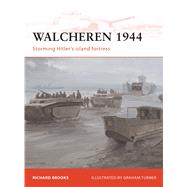
| Introduction | p. 5 |
| Chronology | p. 8 |
| Opposing Commanders | p. 10 |
| Allied | |
| German | |
| Opposing Forces | p. 13 |
| Allied | |
| German | |
| Orders of battle | |
| Opposing Plans | p. 23 |
| Walcheren and the Schelde | |
| Allied | |
| German | |
| The Walcheren Campaign | p. 27 |
| Shaping the battlefield | |
| Infatuate I: the landing at Vlissingen | |
| Infatuate II: the landing at Westkapelle | |
| Storming the batteries I: Zuiderduin and Domburg | |
| Clearing Vlissingen | |
| Storming the batteries II: Dishoek | |
| Bridgehead logistics | |
| The surrender of Middelburg | |
| Last stand in the north | |
| After the Battle | p. 89 |
| The Battlefield Today | p. 92 |
| Further Reading | p. 93 |
| Glossary | p. 94 |
| Index | p. 95 |
| Table of Contents provided by Ingram. All Rights Reserved. |
The New copy of this book will include any supplemental materials advertised. Please check the title of the book to determine if it should include any access cards, study guides, lab manuals, CDs, etc.
The Used, Rental and eBook copies of this book are not guaranteed to include any supplemental materials. Typically, only the book itself is included. This is true even if the title states it includes any access cards, study guides, lab manuals, CDs, etc.